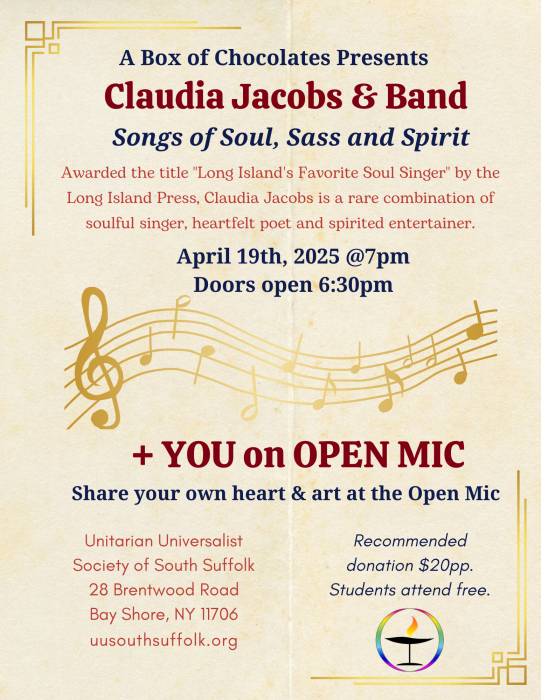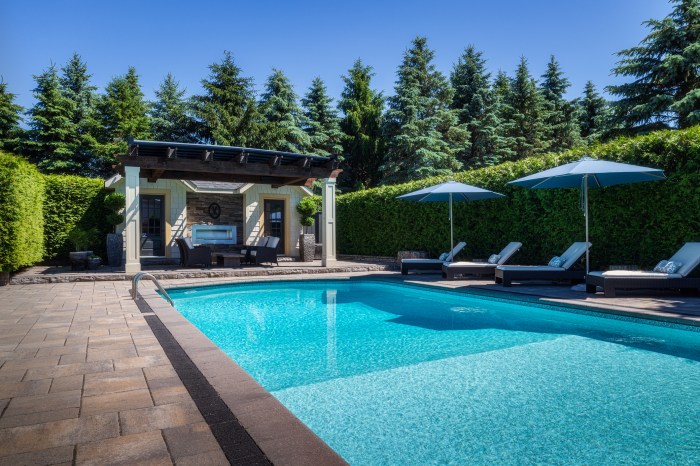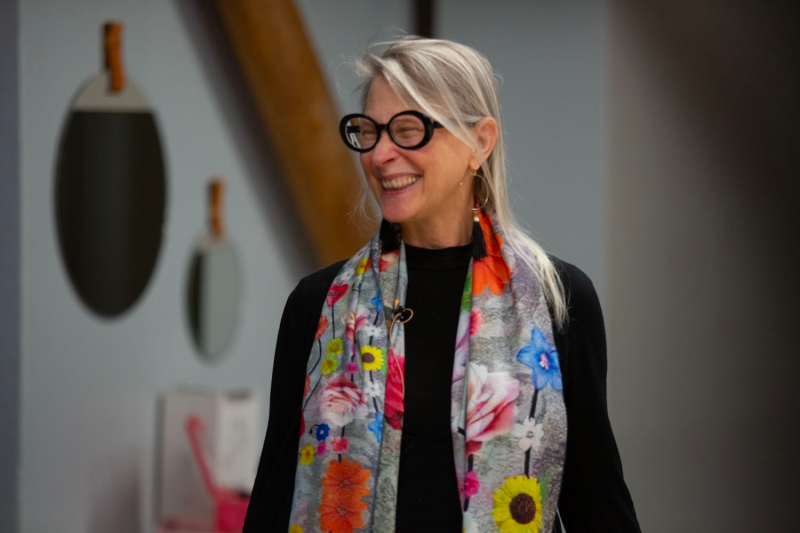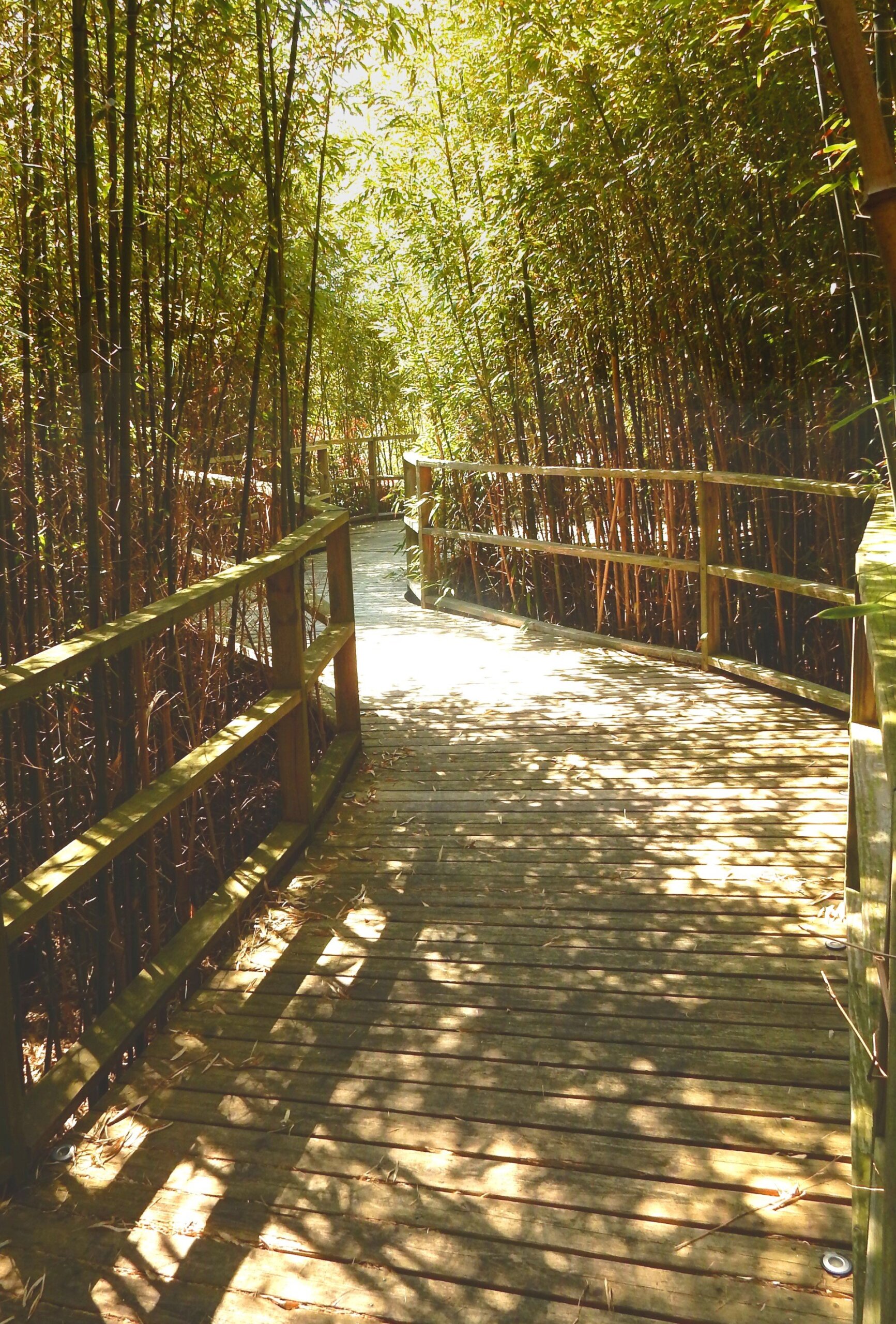
Bamboo is one of the fastest-growing plants on earth and it offers remarkable sustainability features. Its resilience, strength and ability to regenerate quickly make it an excellent resource for various applications such as construction and landscaping, and of special interest to us, erosion control.
And yet it’s a collection of paradoxes: bamboo’s extensive and relatively deep root system holds sand together better than beach grass, stabilizing the island and protecting against storms. But it can also be terribly intrusive, rapidly overtaking open spaces creating a monoculture. For example, my neighbor’s yard (see picture) was completely cleared of all growth this past October. But in just seven weeks since the start of the current season the bamboo has regrown to fill nearly the entire area 4 feet tall. And if uncontrolled it will grow to its full height of about 20 feet in just a season or two!
It’s an even greater problem for those who have gardens, raised walkways and most especially vinyl lined swimming pools. Bamboo roots rapidly grow toward any source of fresh water and it’s easily capable of finding weak or rusted spots in the sheet metal shell of pools and then penetrating the vinyl liner, causing costly damage.
I grew up associating bamboo with the jungles of Vietnam and other tropical environments, not the sands of northern beaches such as Fire Island. And yet this amazing plant somehow prospers on Fire Island even though winter temperatures plunge far below freezing. This past winter we had several days when the temperature hovered around 4 degrees Fahrenheit, cold enough to intimidate me but apparently not the bamboo!
Back on the plus side, its dense growth forms a lush habitat for various animal species, including birds, insects, and small mammals. Bamboo stands provide shelter, nesting sites, and food sources, contributing to the overall biodiversity of the island. And its thick foliage creates a barrier to the impact of wind and water erosion along the island’s fragile coastal areas.
When carefully controlled with buried thick plastic bamboo root barriers (as pictured) it can add a lot of aesthetic appeal to landscaping, create privacy, mitigate unwanted sounds, and define path and walkways. Thickets of it can even add security: try pushing your way through a 30-foot-thick wall of dense bamboo and you’ll see what I mean.
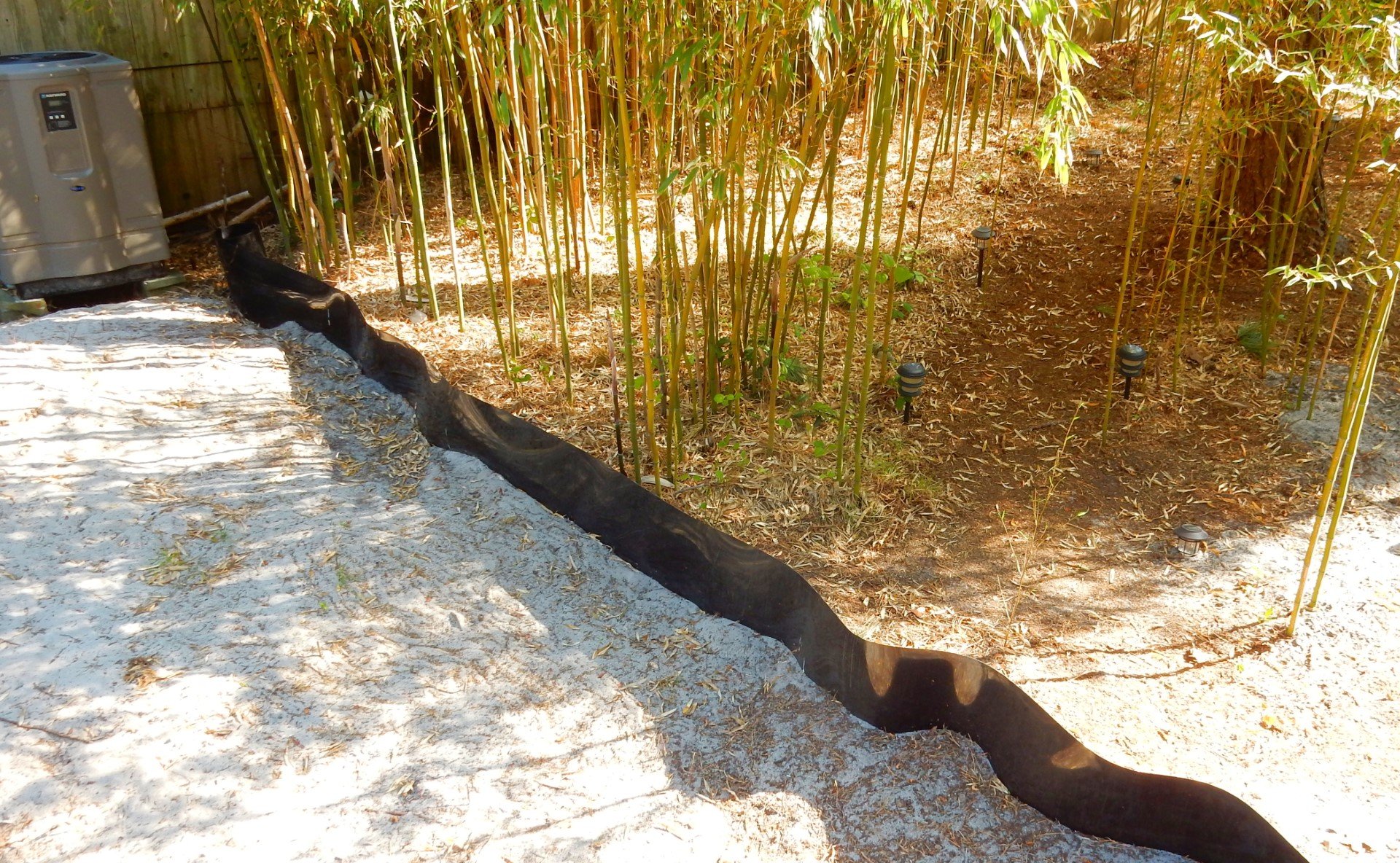
Bamboo also absorbs more carbon dioxide and releases more oxygen into the atmosphere than most traditional plants or timber sources, making it an excellent tool in combating climate change, especially in low-lying coastal areas already threatened by storms and rising sea level. And its roots act as natural filters, reducing water pollution and improving water quality.
It is widely used in construction, providing a sustainable alternative to traditional materials. Bamboo’s strength and flexibility make it ideal for flooring, furniture, and even architectural designs. When properly harvested bamboo fibers are also sought after for their softness, breathability, and moisture-wicking properties. Bamboo-based fabric is increasingly used in clothing, bedding, and other textile products. And bamboo charcoal is utilized for air and water purification due to its absorption properties.
Bamboo grown uncontrolled chokes gardens, destroys grasses (by blocking sunlight), drains swimming pools, and outcompetes native plants. But if properly managed, this incredible plant can be a major part of creating a more sustainable future. The key is to control its growth to gain all the benefits but prevent it from creating widespread monocultures, where it will dominate and outcompete native plants.
Throughout history, bamboo has held cultural significance in many countries and cultures. Bamboo plays a prominent role in traditional Asian architecture, music instruments, artwork, and crafts. Its strength and resilience make it an enduring motif across thousands of years.
Through collaborative efforts between researchers, land managers, and the public, we can mitigate the impacts of invasive bamboo, preserve biodiversity, and maintain the delicate ecological balance. By embracing responsible management, we can ensure that bamboo continues to be appreciated for its remarkable qualities without posing a threat to our homes and gardens or the stunning natural beauty of Fire Island.
Editor’s Note: The state of New York prohibits the planting Golden bamboo (Phyllostachys aurea) and Yellow Grove bamboo (Phyllostachys aureosulcata) species. Also consult local Town and Village municipal laws pertaining this subject for additional guidance.






